Retail of the future
It would seem that the unstoppable growth of e-commerce, total digitalization, optimization of everything, sophisticated customer analytics that “knows” everything about you, automatic delivery of orders to your home and other innovations in retail trade have completely defined the shopping experience for the coming years.
Consumers come for goods in classic retail, order online, via mobile phones, by subscription, via delivery on demand, actively using IT intelligent technologies and much more.
We covered closely the trends of modern retail in a detailed review not so long ago. And since that time, their influence has only increased. Active investors and startups are leading the entire retail industry towards global — digital and automated — changes.
At the same time, there is enough space on the market for unusual formats, which we have collected in our spontaneous rating.
Different locations and concepts demonstrate an amazing unity in one — all these experimental outlets provide consumers with an unusual experience and the very “wow effect” that modern consumers appreciate almost the most.
In this post, we also share some of the unusual business strategies that FMCG retail brands use in retail sales. Let’s see how unusual the future of retail can be.
#5. The pop up supermarket
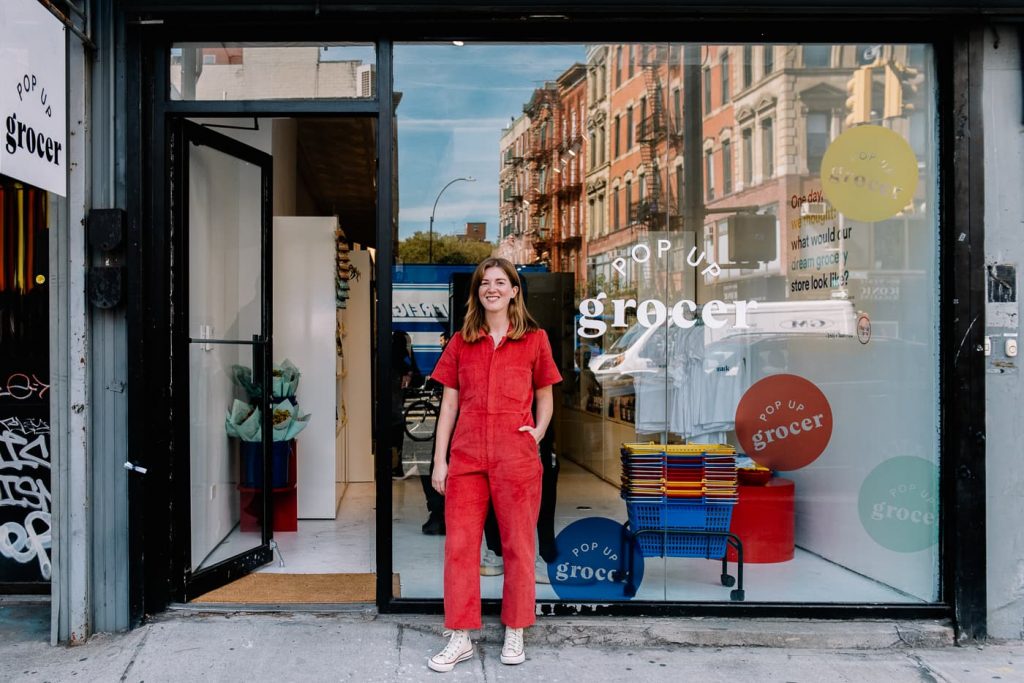
Who said that the store should be stationary? Founded by Emily Schildt, Pop Up Grocer, a pilgrimage store, sells a wide variety of premium brands of food, beverage, home, pet and body care products. The signature feature of Pop Up Grocer is that it opens … only for one month and each time in a new place, and even in different cities.
If you have ever opened a retail outlet, you are well aware of how difficult this work is. A typical grocery store is the size of a football field and stocks up to 40,000 SKUs.
Now imagine all that planning for opening a store that’s only open for one month.
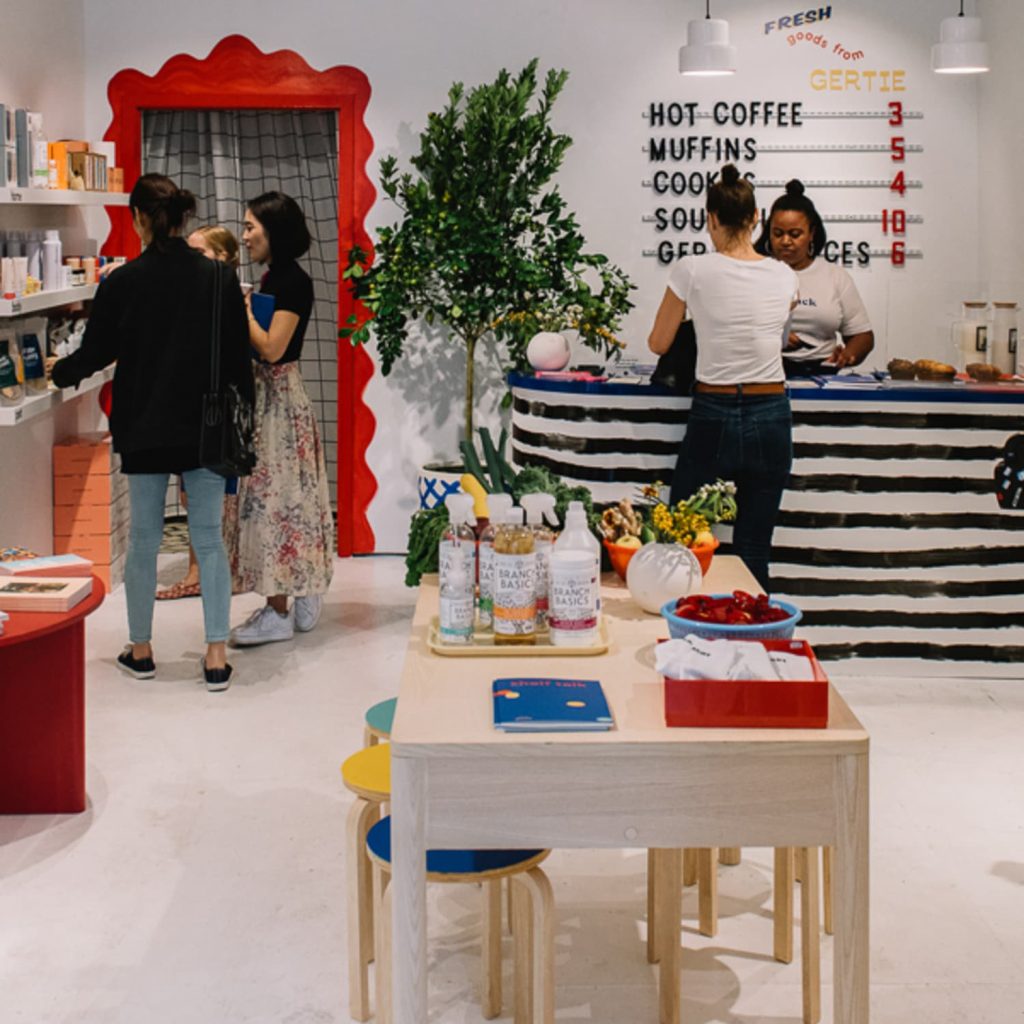
Pop Up Grocer is the first grocery store in the world to have this experience. The company plans to continue to develop its platform by trying new products and formats. So a cafe appeared inside the shopping area.
Since its founding (the first point opened in 2019), the brand’s stores have opened in New York, Chicago, Los Angeles, Austin, Miami and Washington, DC.
And the company is not going to stop.
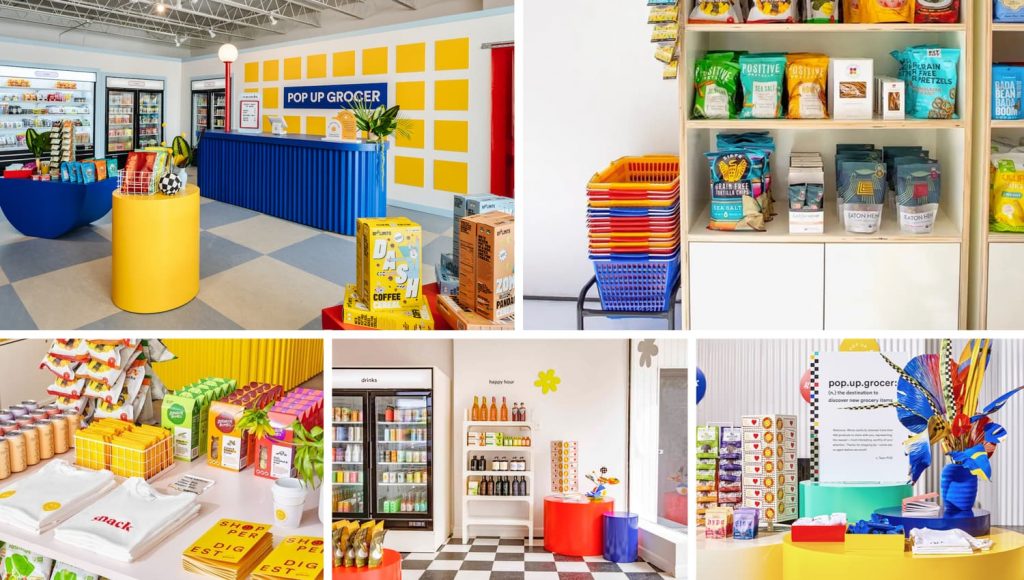
There are common elements in the design of Pop Up Grocer, but in general, each new store is different from the previous one. Not the last role in this case is played by the texture of the area, which can be obtained in a short-term lease.
To appear on the shelves of Pop Up Grocer, brands pay a one-time flat «showcasing» fee. Its size varies depending on the strength of the brand, while startups, which usually do not have enough resources to enter retail, receive decent discounts.
But the most invaluable thing for manufacturers is sales analytics when launching their new products.
The product is on consignment and sold at the price set by the brand. Pop Up Grocer donates 5% of its income to support local social causes, which is why Emily Schildt’s mobile stores are especially popular with conscious consumers from local communities and business communities.
#4. Mode Truck

Fashion designer Joey Wölfer of Sag Harbor, New York specializes in women’s jewelry, apparel and accessories.
She decided to open her experimental boutique completely in a mobile format — literally — on wheels.
The range of the world’s first fashionable Styleliner Truck is made up entirely of extraordinary limited-edition jewelry mixed with vintage finds and the founder’s own apparel.
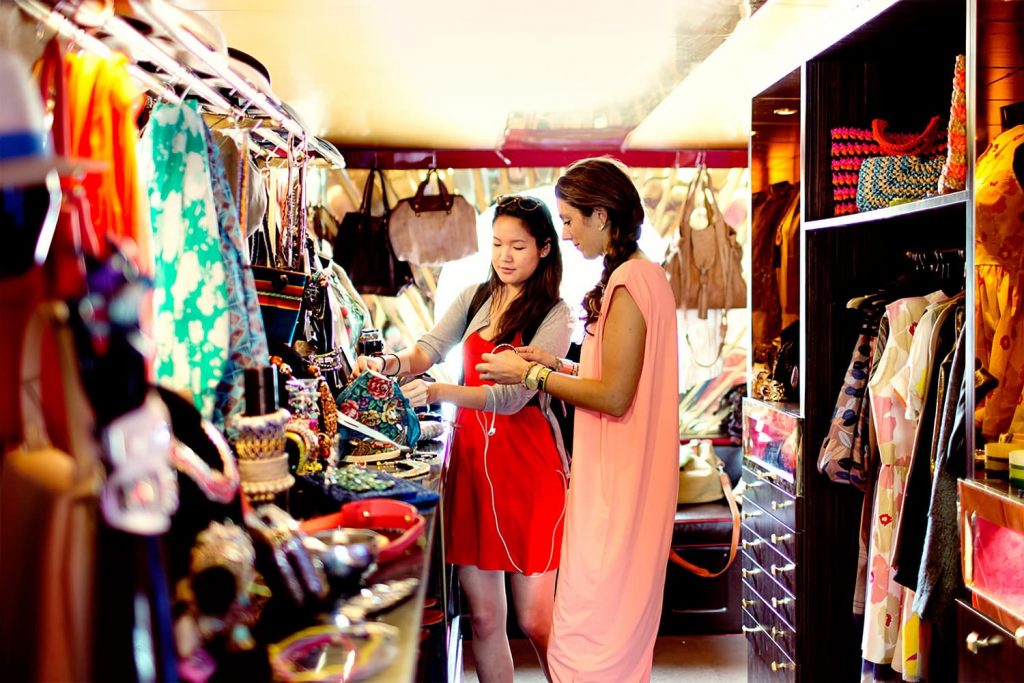
If food trucks have long become familiar objects of megacities and not only, «couturier trucks» are exotic.
Actively traveling around the country in search of rare goods, Joey combined «business with pleasure.» The «nomadic fashion truck» has been seen all over the United States.
Joey herself — the mother of two children — calls her store nothing more than a «treasure chest», which can be purchased almost in a single copy.
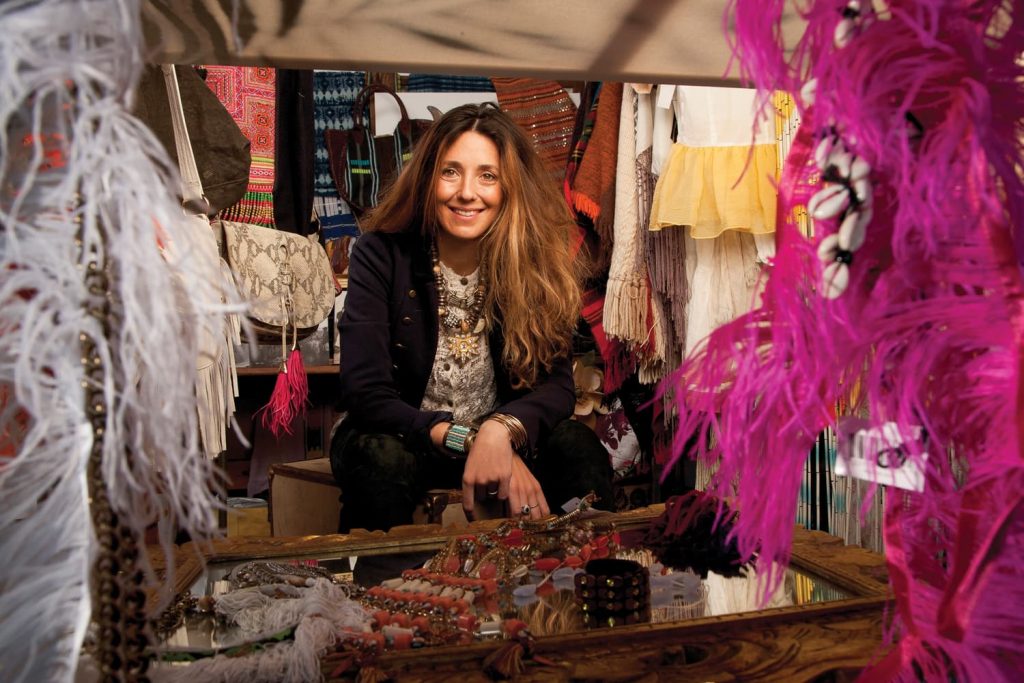
The van, on which the girl travels and trades, is decorated with gold paint, red suede and varnish. Buyers often compare the style of the StyleLiner to 1980s nightclub decor.
#3. Santa-Muji
Every Christmas in the historic center of Barcelona, an unusual themed shop, designed as a vending machine, opens its doors.

The robotic kiosk is owned by the Japanese company Muji. At Christmas Machine, you can buy various figurines, balls with artificial snow, Christmas decorations and other New Year’s souvenirs.
Unfortunately, there is not much information about how Santa Muji works. This is not a vending machine in the usual sense. Just only there is a real person inside the roboshop, who manages the retail outlet from the inside.
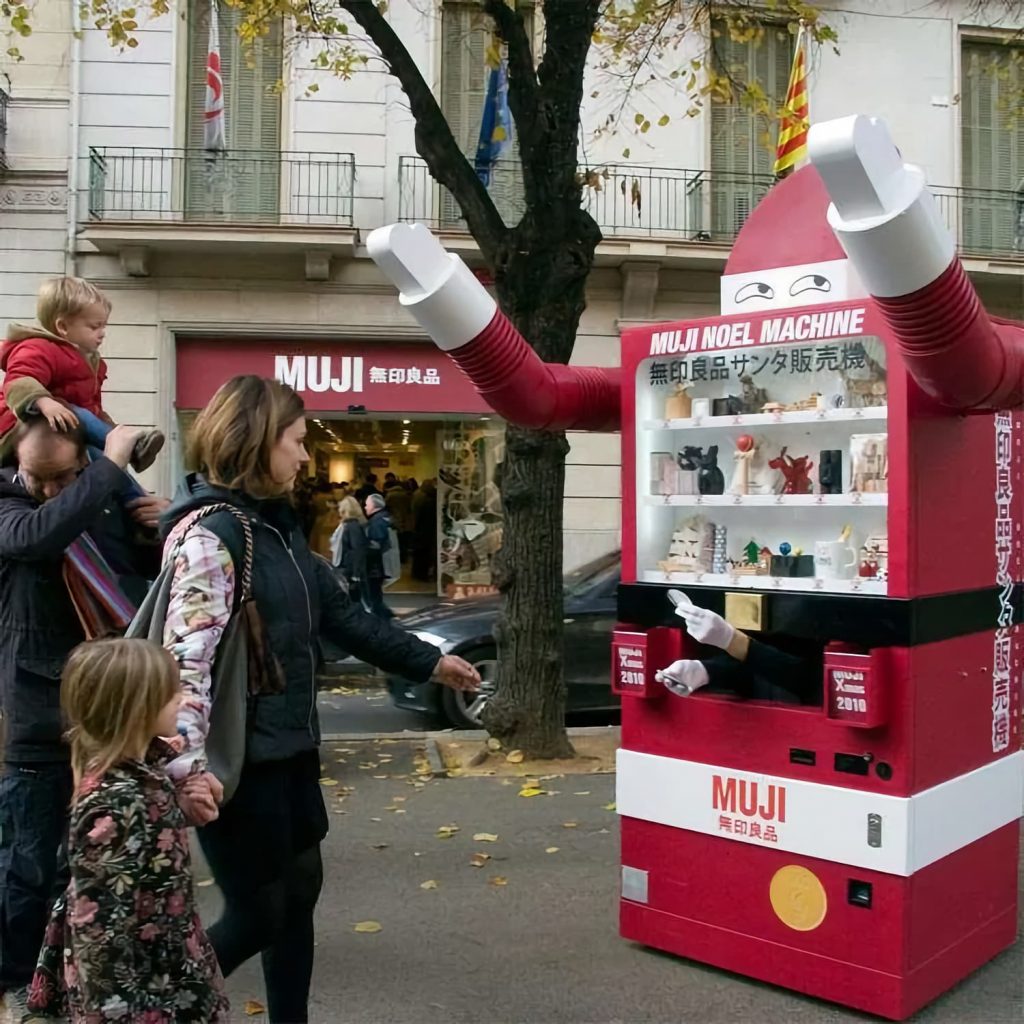
In our opinion, this is an unequivocal embodiment of the idea that «if Santa were Japanese, it would be a robot.
#2. Recycleshop
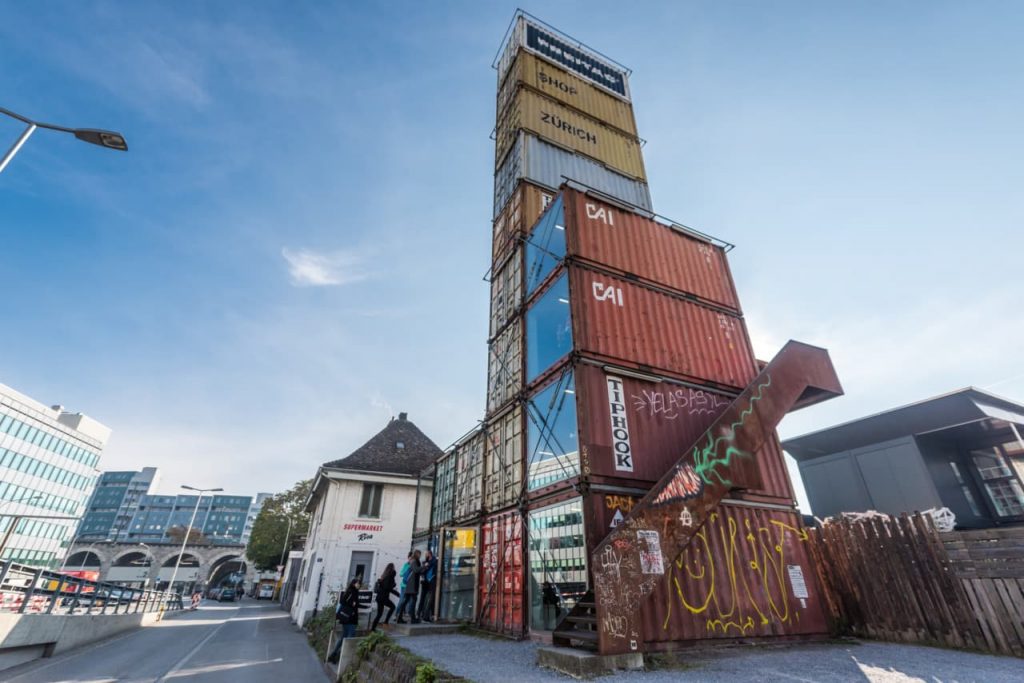
Freitag Turm is a store of bags that are made only from recycled materials, namely canvas tents with handles from truck seat belts.
The creators of the brand decided to go all the way with their ideas of recycling, and built their store in the form of a unique skyscraper from 19 shipping containers stacked on top of each other.
It turned out to be practical and attractive. Moreover, it saves a lot of space, since the store occupies more area in height than in width.
Over 1,800 products can be found across four levels, such as bags, smartphone cases, wallets and more made from recycled tents.
Another five floors lead to the viewing terrace (open during store opening hours), which offers a breathtaking view of the ever-changing Zurich.
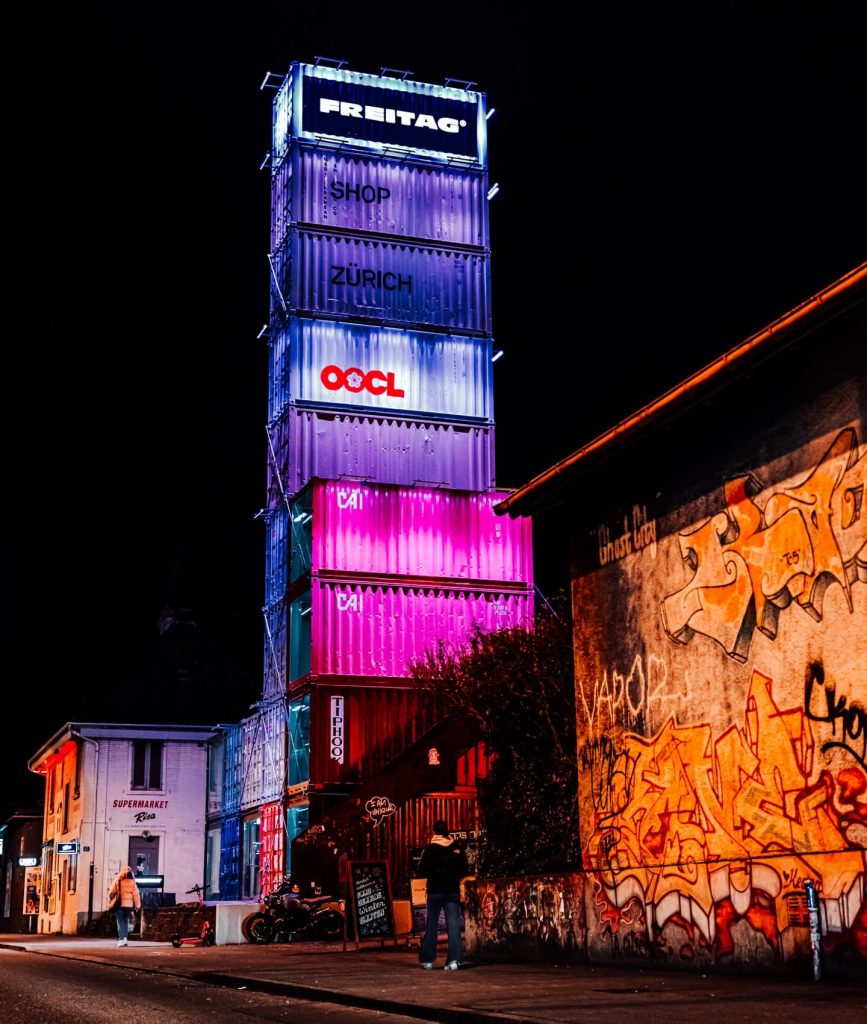
At night, the Freitag outlet is beautifully illuminated with lights.
#1. Two Twirl sticks
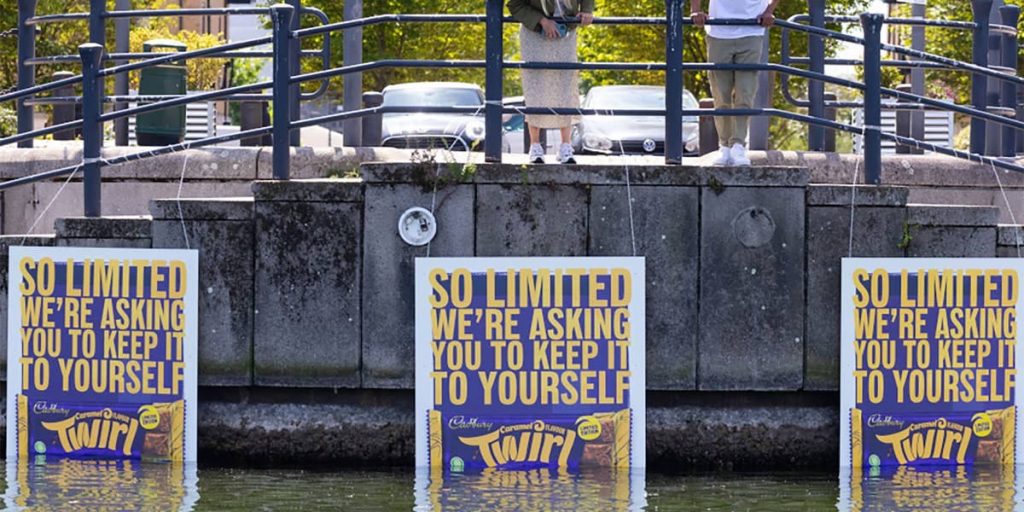
Chocolate manufacturer Cadbury’s got to the first line of our spontaneous rating not so much because of the trade format itself, but because of the organization of sales in retail.
His incomparable recent launch of another hit Twirl Caramel was based solely on hype. It is worth dwelling on this in more detail.
This summer, the candy brand introduced a limited edition caramel flavored Twirl chocolate bar. You could learn about the new product and how and where to buy Twirl Caramel, which went on sale in June last year, in just three rather unusual places.
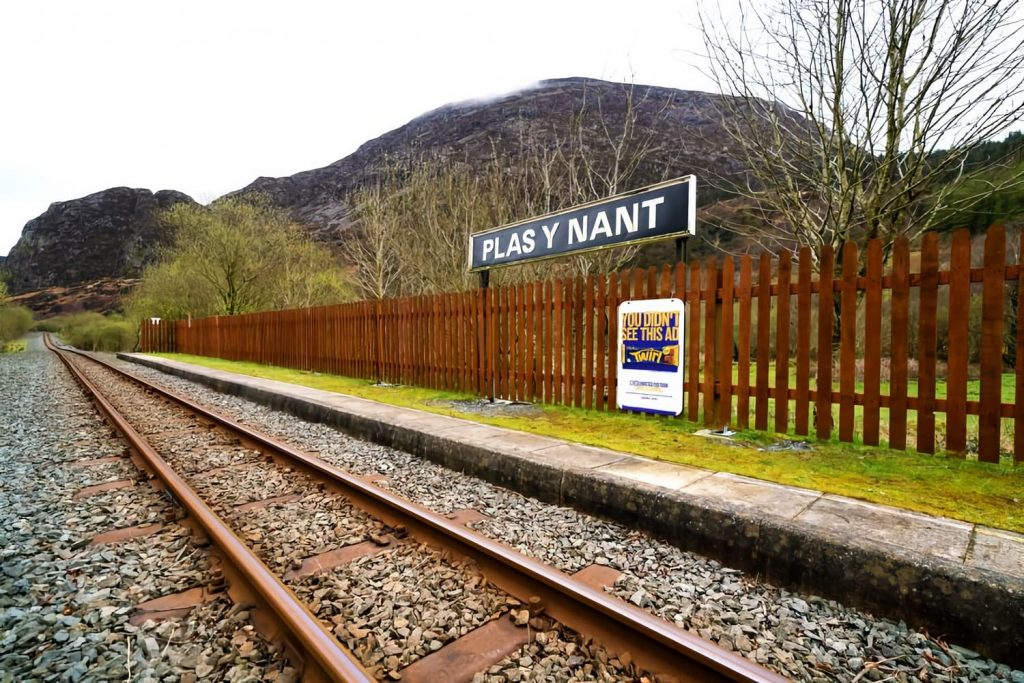
Advertising posters accompanying the launch of the novelty were placed at the Royal Victoria Dock in Greenwich (the advertisement itself could only be seen at low tide).
Another poster was installed at the UK’s least used railway station, Plas Y Nant, near Gwynedd on the Welsh Highland Railway at an elevation of approximately 141m, about 25km from Porthmadog, East Wales.
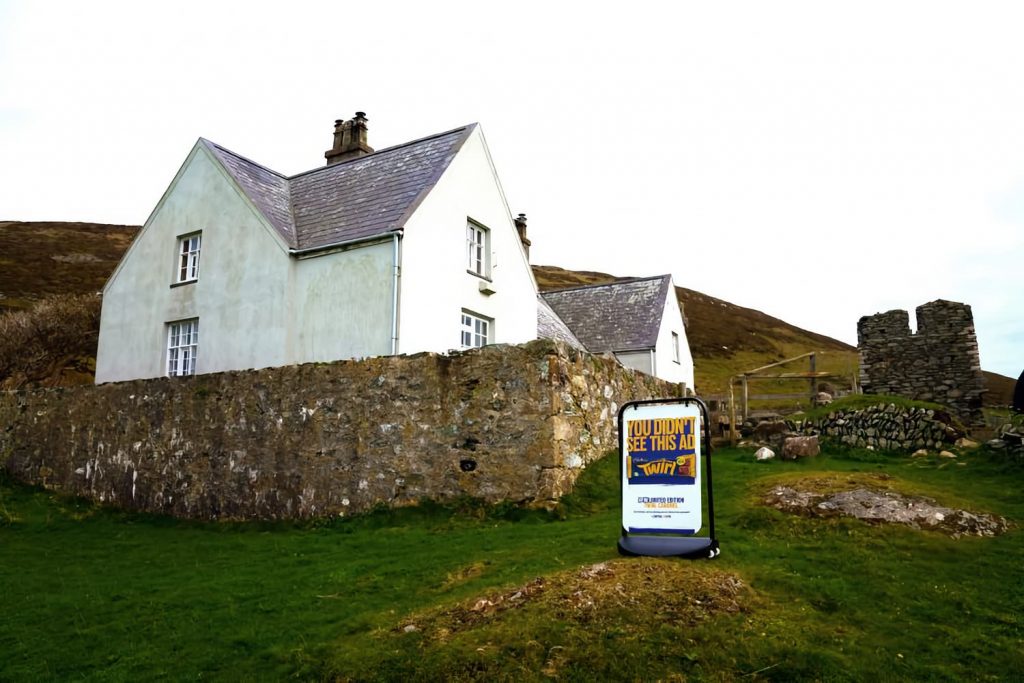
Finally, a third billboard was placed on a remote island off North Wales with a population of just two.
To get information about the launch and the place of sale (you could only buy one package in your hands), you had to have a Twitter account. And it is natural to try to be at the right time in the right place by performing simple actions with a social account.
Once artificially created by the brand, the deficit in sales of Twirl Orange (exactly 500 bars appeared on the shelves per day and sales stopped until the next day after they were immediately sold by superfans) made the novelty the brand’s best-selling bar. Before Twirl Caramel.
Do you want to sell a lot? Create a buzz!
Wow retail
What determines the very «wow effect» depends on the expectations of customers. And those expectations continue to rise, a recent study by Wharton’s Baker Retail Center and The Verde Group found.
The unusual format of the retail outlet, assortment, location and even opening hours will undoubtedly surprise and delight customers. However, among other factors that cause «wow», there are also excellent service that goes beyond, and even such mundane things as a clean and just well-organized space in the store.
Some of the highest rated «wows» clients in the study:
- Fast free shipping
- Easy return
- Convenient and hassle-free shopping
- Good range of stock
- Convenient application or website for online shopping
- Attention to detail in packaging
Interestingly, the pandemic has not made shoppers any less demanding or forgiving. If they face supply chain issues, staffing issues, or other roadblocks that create friction, they simply shop elsewhere.
Thomas Robertson, professor of marketing and director of the Baker Retailing Center, believes that so many of the things that are listed as «wow» are actually the basics that every retailer should have in the current moment.
And the fact that customers are pleasantly surprised shows two things. First, many retailers are still struggling, and so the simple satisfaction of habitual expectations can come as a surprise. And secondly, adding unusual experiences to the usual buying process, such as artificial intelligence or immersive experiences, complements, but does not replace, retail business processes accumulated over the years.
But here we can add that studying the unusual experience of the most daring retail players and implementing it in their own stores is a huge part of creating the consumer experience that is so demanded by modern buyers. This should never be overlooked.
